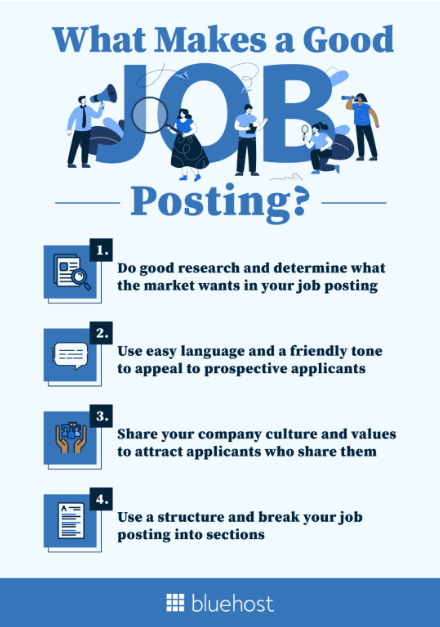
You could say that small businesses are the backbone of the UK economy. With over 5.5 million SMEs in the UK, they account for a staggering 99.9% of all private sector employers. However, despite that seeming economic prominence, small businesses face a lot of challenges from the point of startup.
As many as 20% of all new small businesses fail in their first year. However, for those that survive, other challenges await that they must face head-on. One major hurdle they need to deal with is recruitment marketing. How do SMEs persuade the brightest and best that they should work for them? What strategies can you employ that ensure that your recruitment marketing stands out?
What is recruitment marketing?

Recruitment marketing is a fairly new addition to your HR (human resources) stable. It refers to the practice of applying tried and tested marketing strategies to your recruitment efforts. The goal is to show that there is high value in working for you so that you can recruit – and retain – the best talent that fits with your business and who can contribute to your business growth.
While there are a growing number of HR professionals specialising in recruitment marketing, it may well be the case that an SME will have one of their HR team take on that role. As with other areas of HR, there are tools and technologies that can aid you in your efforts..
Why is recruitment marketing essential for small businesses?

If you think about the products or services your small business offers, then you will understand how important it is to get the marketing for those just right. Without effective marketing, would you have the same amount of customers who are aware of your brand and who have made purchases from you?
It’s no different with your recruitment efforts; you want to be able to control the narrative so that potential candidates see the attractions of working for you. For example, you want to hire a new staff member to assist with your application migration strategy and who will head up your IT team. You’ve identified a suitable candidate but they are also looking at another vacancy.
The two roles are almost identical; they offer the same level of wages, the same benefits package, and the same opportunities for career progression. However, the candidate doesn’t know this for now as the other employer hasn’t marketed themselves well enough and there is little information beyond basic salary and job role. You have included all pertinent information and more, and the candidate decides to pursue a role with you.
As an SME, one of the biggest challenges you face is a financial one. This can apply to everything from operating costs to wages, and recruitment can be a big part of that. Onboarding a new employee costs much more than their salary. If a new team member is on an average UK salary of £27,600, the full cost to your business in the first year is around £62,890.
The recruitment process adds a lot of costs to your annual expenses, which makes attracting the right candidate and retaining their services so important. The process presents you with several costs.
- Advertising. The first costs you will face are the advertising costs associated with posting the vacancy on job sites, social media, and recruitment agencies if you use them (recruitment agencies will often take a percentage of the first year’s salary).
- Time. How much time elapses between advertising a vacancy and the successful candidate starting work? Depending on circumstances, that time could be affecting productivity and losing you money.
- Interviews. You may conduct initial interviews by video call but once you move to face-to-face interviews, your HR team needs to spend time organising and conducting the interviews and you may also reimburse any candidate expenses.
- Training/onboarding. Once a new staff member is recruited, you have to onboard them. Depending on their job role, there may also be a lot of training. While you may use a video presentation for orientation, you also have to think about allocating other members of your workforce to train them.
10 effective recruitment marketing strategies for small businesses

You can see how important it is to have a robust recruitment marketing policy. In the long run, it could save you tens of thousands of pounds (if not more). But how do you translate an understanding of the problem into strategies that actually benefit you?
1. Build and promote your brand
If prospective employees have never heard of you, they may not apply for any vacancies. Just because you’re a small business doesn’t have to mean you’re an unknown one. You want people to know what your company’s vision and values are and how your company culture contributes to employee satisfaction.
You can do this in a variety of ways. Establishing and maintaining a strong social media presence can help spread brand awareness as well as contributing to recruitment efforts. Ask current employees to leave testimonials on sites such as Glassdoor. Those testimonials can highlight the positives of working for your business and can attract candidates.
2. Have a hiring plan and budget
SMEs often have restrictive budgets and that can apply to recruitment too. While you can’t plan for every eventuality, you should develop a hiring plan and recruitment budget for the year ahead. You will have some idea of any expected growth that would mean you need new staff. You may also have an idea of the roles you will need to fill or create.
When it comes to budget, some costs are unavoidable. However, look at low-cost or free options such as posting vacancies on platforms such as LinkedIn. You can also consider using candidate relationship management tools so that previous unsuccessful candidates may be considered for any new vacancy. Another tactic is to streamline the hiring process to make it more efficient.
3. Focus on the unique

What makes your business stand out from its competitors? It’s something you’d have focused on in your product marketing, so repeat the process here. SMEs often have unique traits that differentiate them from larger businesses. Even something as simple as ‘a family business’ could be attractive to a new hire.
Highlight the human aspects of your company on your website and social media pages. This can show why you are a good employer and you can discuss your vision or provide expert tips and blogs on subjects such as the best tool to make international call transactions. You want candidates to look at your info and think, ‘I want to work there’.
4. Be honest
Everyone values honesty and that includes job candidates. Don’t make wild claims about business growth or opportunities for career progression unless you can back them up. One of the attractions of SMEs is the fact that employees can stand out and may see rapid progression through the ranks if they’re very good at their jobs.
You may be able to offer a tailored career path that will give new employees training opportunities and introductions to new skill sets. If you prioritise internal communications and transparency, tell the world about it. The knowledge that their voice will be heard can be attractive to many.
5. Create engaging job posts

Just as you want your organisation to stand out, so you want your job posts to do the same. Try to find a balance between your ads being as informative as possible and a lightly casual, even humorous, approach. Make a list of bullet points before creating a job post so you know what to include in them.
There are obvious things such as job description and basic wage to include, but you will also want to include factors such as career opportunities, additional benefits, and company culture. Your goal for every job post you create is to make anyone qualified who is reading it want to apply for the role.
6. Everyone’s a recruiter
You may have a professional HR team but that doesn’t preclude involving all your employees in the recruitment process. Every one of your staff may have personal and professional networks that could include your ideal candidate so always look to employee referrals. This can work in every sector. Even if you look at Oleeo’s campus recruitment, the chances of a lecturer knowing someone who could fill a vacancy are quite high.
This is another area where you can both build brand awareness and humanise your business. Having every staff member, from management down to your most recent recruit, share content and job information can show how inclusive your business is. That also extends to having a strong diversity policy that demonstrates how you think.
7. Alternative routes
You may find your ideal candidate through other methods than job postings. If you’re using an applicant tracking system like Oleeo’s or an effective candidate relationship management system, then you may have that person right under your nose (or mouse cursor). Any time a vacancy arises, look at your existing data to see if you can forego the recruitment process.
Another way to promote a two-way street policy is to look on industry social media pages or LinkedIn. If you’re looking for particular skill sets and/or experience, then searching profiles may identify the person. You can then reach out to them to see if they have any interest in the position offered or even if they’re currently job-hunting.
8. Think about where you post
You’re never going to compete with the big boys when it comes to hiring and HR budgets. That doesn’t mean you should only be looking at free options when it comes to posting your vacancies. Look for job sites in your sector that offer cost-per-action options so that you can remain within any budget parameters that have been set.
Make a list of such sites then drill down into what they offer. Ideally, you want sites that offer your screening capabilities and candidate matching. As already suggested, LinkedIn is a fantastic alternative to job sites and their services won’t break your budget,
9. Use data
Data analytics can be a great tool in every area of your business. For the recruitment process, you can analyse data from previous recruitment campaigns to identify what platforms provided the most engagement, what ads gave a good ROI (return on investment), and any other relevant metrics.
Recruitment analytics can become an integral part of your future recruitment process. Identify the best recruitment campaign to use as a benchmark for future campaigns. If one performs better than your existing benchmark, then it in turn becomes that benchmark. You should be looking at your recruitment analytics to tweak and improve things as you move forward.
Some of the metrics you should be looking at include:
- Cost per hire. Over a year, what is your average cost per hire? Take your total recruitment costs and divide by the number of successful hires.
- Applicant quality. What percentage of applicants met the minimum requirements you set for a job role?
- Time to fill. What is the average number of days it took from initially posting the vacancy to the successful candidate being hired?
- Acceptance rate. How many job offers did you make over a year? What percentage of those offers were accepted by the candidates?
10. Use technology and automation

One of the major challenges – ironically – that SMEs face is a lack of manpower. Some of your employees may have to wear multiple hats so seeking some help with the recruitment process can be a real benefit. You may decide to use AI and/or automation for some of the initial screening stages.
AI and ML (machine learning) can also help you target the most suitable candidates across a range of platforms by matching candidates with the skill sets and experience you are looking for. You can also use AI chatbots to answer any simple candidate questions or even do some skills evaluations or screening tests before they engage with a member of your team.
The takeaway
Your priority is to ensure your recruitment marketing efforts reach your target audience. You can target candidates you have already identified or you can reach out to qualified candidates through posts and job ads. Your marketing team can help your HR staff develop a recruitment marketing funnel that helps efficiently utilise time and resources.
Over time, you can build a talent pool through email campaigns or a specific recruitment marketing campaign. As people move through your talent pipeline, focus on candidates that tick all your boxes even if they’re not successful on this occasion. By developing a robust recruitment marketing campaign that includes some or all of these strategies, you can make your hiring process more effective.







